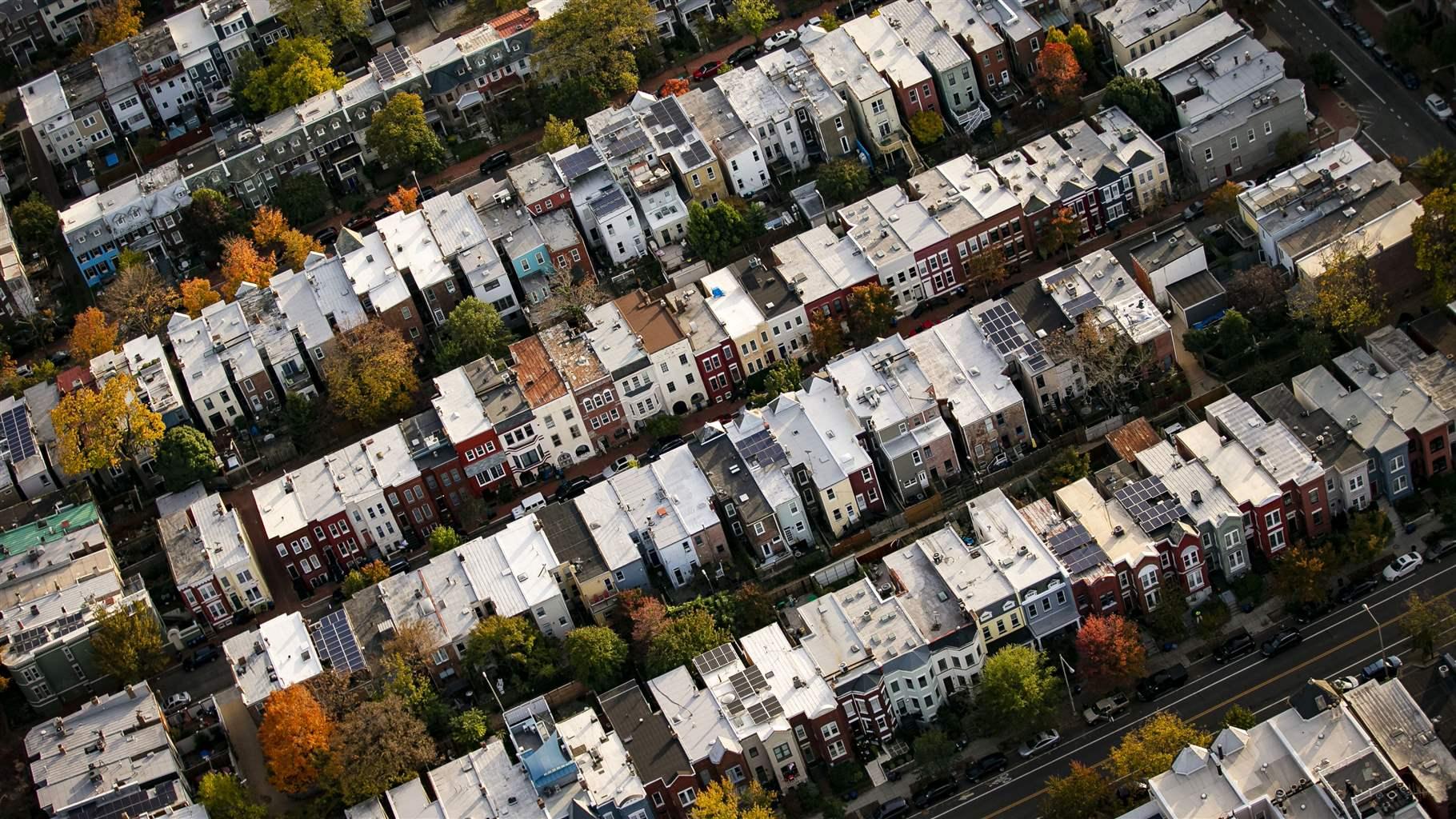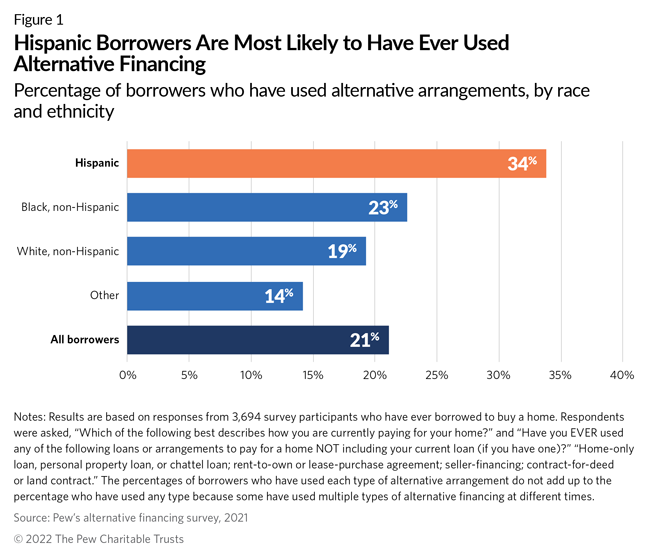Amid Small Mortgage Challenges, Some Prospective Homeowners Turn to Alternative Financing
Housing experts say policymakers should address four key challenges with such arrangements

Rising housing costs coupled with difficultly accessing small mortgages have brought renewed attention to the alternative financing arrangements many Americans use to purchase homes. Although well-structured alternatives have the potential to boost opportunities for homeownership, especially among households that cannot access mortgages, existing models often introduce risks for homebuyers.
Alternative financing arrangements include land contracts, lease-purchase agreements, seller-financed mortgages, and personal property loans. Each type of contract comes with its own structure and protections but, in general, such arrangements frequently have higher costs than traditional mortgages and offer fewer consumer protections.
For example, in land contracts, buyers make regular housing payments to the sellers rather than to traditional mortgage lenders. They typically do not obtain legal title to the property until the final payment is made, leaving them vulnerable to losing equity accrued in the home. Personal property loans, which are most similar to mortgages, offer more protections than other alternative financing arrangements, but still have higher interest rates and fewer protections in delinquency and default than mortgages.
In August, Urban Institute held a webinar to discuss the range of financing options that people use to purchase homes, with a focus on lease-purchase agreements and personal property loans for manufactured homes. The Pew Charitable Trusts took part in the panel to present our alternative financing research. The event highlighted the problems and opportunities associated with these arrangements as well as actions that policymakers can consider to improve access to safe, affordable credit.
36 million Americans have used alternative financing
Most Americans finance the purchase of their home using a mortgage, but a substantial number turn to alternative financing arrangements. A first-of-its-kind survey published by Pew earlier this year found that 36 million Americans have used alternative financing at some point in their lives, while 7 million were using them at the time of the survey in mid-2021.
These arrangements, however, often lack protections comparable to those afforded to mortgage borrowers. For example, researchers have found that sellers sometimes inflate the asking prices for properties because third-party appraisals are not required. They may also insist that buyers pay for repairs to properties for which the buyers do not hold clear title or evict potential buyers without first offering them the opportunity to catch up on missed payments. Homeowners also can face difficulties building equity or qualifying for consumer protections and financial assistance because they cannot demonstrate legal ownership of the home due to the nature of the financing.
The data also shows that borrowers of color tend to turn to alternative financing arrangements more often than their White counterparts. For example, Pew’s survey found that 34% of Hispanic households have financed a home purchase with alternative financing compared with 19% of non-Hispanic White home borrowers.
Four key challenges for policymakers to focus on
During the August panel discussion, a range of experts agreed that a common goal among policymakers, academics, legal aid professionals, and other stakeholders should be to preserve the homeownership opportunities enabled by alternative financing arrangements while taking steps to address the risks and challenges they pose. The panelists and discussants from Urban Institute, Pew, advocacy organizations, and industry identified four key issues policymakers should devote more resources to understanding. They are:
- A lack of small mortgages pushes some borrowers into using alternative financing. Because of high fixed origination costs, many lenders are reluctant to originate mortgages under $150,000. As a result, low-cost homes are financed with mortgages much less frequently than higher-cost homes. When mortgages are unavailable, many prospective buyers resort to alternative arrangements. These arrangements have higher interest rates relative to traditional mortgages. They also offer fewer consumer protections in the case of delinquency or default and often lack clear processes for transferring the title of the home from seller to buyer.
- Personal property loans, which are typically used to purchase manufactured homes on rented land, are costly to borrowers. On average, personal property loans have interest rates that are more than twice as high as traditional mortgage loans. Among the factors that contribute to this are high industry concentration, the lack of a secondary market for these loans, and the small balance of most personal property loans.
- Despite growing interest in alternative financing issues, there is little evidence on business models that have achieved positive outcomes for most of the lessees. Research demonstrates that some unscrupulous actors have historically used alternative financing arrangements to strip borrowers of their home equity. Newer models tend to offer more transparency and consumer protections and have specific goals for the percentage of renters they will convert to homeownership. However, many business models are so new or operate at such small scales that analysts have not yet seen outcomes that prove that these models can sustainably expand homeownership to significantly more borrowers.
- The risks of alternative financing arrangements disproportionately fall on Black, Hispanic, and Indigenous borrowers. These households already have lower homeownership rates than their White counterparts and have more difficulty getting access to traditional mortgages. For that reason, modifying the home financing landscape should put borrowers of color at the center of changes to help reduce the racial homeownership gap.
Adam Staveski is a senior associate and Tara Roche is the project director with The Pew Charitable Trusts’ home financing project.









